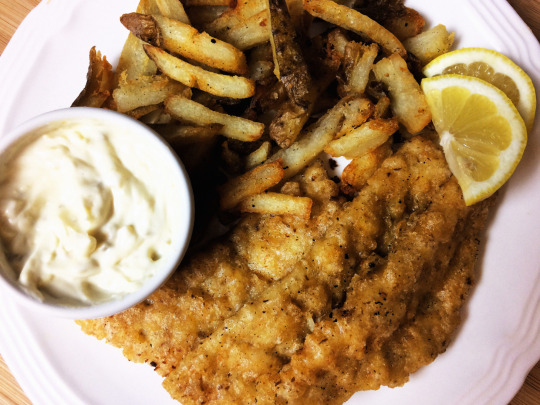#rice planting season
Explore tagged Tumblr posts
Photo

【昨日の出会い】
鳳凰が舞い降りてきた!? 額井岳(大和富士)と撮影 2023年5月12日
9 notes
·
View notes
Text




Autumn 2024_133 4 seasons in the neighborhood, Japan
#nature#trees#forest#four seasons#japan#autumn leaves#fallen leaves#autumn#maple#plants#fall#mountains#rice field#waterfall#valley
55 notes
·
View notes
Text

蝶の検分
2009年、田園調布せせらぎ公園。
蝶が実りの確認をしにきている。
#Lightroom Classic#VSCOfilm#photographers on tumblr#lensblr#original photographer#original photographers#original photographers on tumblr#original photography#original photography blog#original photography on tumblr#photoblog#photography#autumn#autumn season#autumn season in Japan#autumn season mood#autumn season time#autumn season tint#September#Japan#Tokyo#長月#日本#東京#田園調布せせらぎ公園#稲#稲穂#rice plant#ear of rice
43 notes
·
View notes
Text

WWII Mock Fish and Chips (Vegan)
#vegan#lunch#british cuisine#vintage#veganizzed#fish and chips#rice#onion#garlic#thyme#flax seeds#plant milk#old bay seasoning#paprika#cornstarch#beer#vegan butter#fries#potato#olive oil#black pepper#sea salt#tartar sauce#vegan mayo#dill#relish#lemon
23 notes
·
View notes
Text
Rain (Eiji Miyoshi) Enka
youtube
Rain is a special existence for Japanese people. In addition to the four seasons of spring, summer, autumn, and winter, Japan also has a rainy season that lasts for about a month and a half. It's a gloomy season with a lot of humidity and dampness, and it's easy for mold to grow. However, it is also important for planting rice, the basis of Japanese food, and raising seedlings, so it is also a gentle season. This song by Eiji Miyoshi was released 50 years ago when I was a junior high school student. Rain is neither good nor bad here.
雨(三善英史)演歌
雨は、日本人にとって、特別な存在である。春夏秋冬の四季の他に、日本には梅雨があり、ひと月半ほど続く。湿気が多くてジメジメし、カビも生えやすい憂鬱な季節である。だが日本の食の根幹・米の植え付け、育苗が行われる大事な時期でもあり、そう考えると、優しい季節でもある。三善英史のこの曲は、50年前、私が中学生のころリリースされた曲であり、ここでは雨について、善悪どちらの側面でも歌われていない。
2 notes
·
View notes
Text
i almost have the perfect eggy rice down. its missing something though, and idk what.
#we got an egg fried in a bit of plant oil and a bit of butter#seasoned with Tony's and pepper#we got rice seasoned with rice vinegar and a bit of soy sauce#and the whole affair is topped with chili crisp and scallions#and i wilt some greens in the leftover oil and add some minced garlic when i have them#im SO CLOSE to concocting a perfect breakfast#maybe some furikake for the rice?
1 note
·
View note
Text
The process in which cooking rice improves my mental health:
rinsing/soaking the rice in plain tap water while I wash/prepare the pot gives me rice water, which I can later on use to water my houseplants, which is good for them and gives me nice and shiny healthy plants!
turning plain rice into delicious rice is easy, the only thing you need to do is to add sauces and seasonings directly into the water while waiting for it to boil, turning plain water into delicious water.
once the water is on a low boil and the lid is on, all I have to do is not fuck with it for 20 minutes. Since I am not capable of leaving the area while the stove is hot nor can I stand still and watch for 20 minutes, I am compelled to wash dishes and clean the kitchen area, turning dirty dishes into clean dishes and dirty kitchen into a clean kitchen.
then I wander off anyway and go water my plants with the rice water, turning unwatered houseplants into watered houseplants.
once the delicious rice is complete, I can eat it, and turn myself from has not eaten dinner into has eaten dinner.
with the tools available in my house, I can take neutral things and change them into awesome things, which can be used to turn bad mental health things into good mental health things.
3K notes
·
View notes
Text
things that are not talked about enough in Love and Deepspace pt. 2
thanks to comments on part one and perusing LADS Reddit and Youtube, here are more ttantaeilads part 2 Wanderer Bugaloo: a reminder that these are canon in the LADS universe:
Despite being big eaters, Sylus and Xavier don’t like wasabi
Zayne is a kaomoji enjoyer
According to Sylus, Mephisto is not 100% waterproof
Sea God Rafayel kicks MC off a cliff
Glowing singing toy handcuffs exist in Linkon
Xavier once waited for rice to grow
In addition to sleeping sitting up, Sylus is also a stomach sleeper, or he became one after meeting MC
MC has also said she sleeps on her stomach when she's tired after missions
Rafayel stepped out of the bathtub, slipped on a paintbrush, sprained his ankle and checked himself into the highest ward in the hospital
According to Zayne, if you wear a black tie and white shirt, you will resemble 85% of him
Sylus got a money tree stolen from him
Zayne accidentally buys a water tank instead of a cup
Sylus, the type of person to hold anything you give him while he’s on a call
Hotpot flavoured desserts exist in Linkon
Xavier owns a star-shaped wand seasoning shaker
Rabbits were once set loose in a hospital
MC gets stalked on two occasions
"okay but like we can just stand there and look smoking hot" is a line Rafayel commented once
MC turns a warped vinyl record into a fruit plate
Xavier will fight your boss
Zayne is good at snowboarding
MC once caught a lobster while surfing
Sylus almost dies in the desert
Xavier leaves a plant unattended that it grew roots to cover his floor
MC is good at origami and sometimes teaches it to the kids at Akso Hospital
Artsy Birb is a second grader
Zayne's nickname at a restaurant "Two Seasonal Specials Dine-in"
A version of Monopoly exists in Linkon
Xavier’s status “After slaying the Wanderers, the bread in the microwave is straight fire”
Rafayel and the way he names his fish friends: 001, 002 and 886
Lil S Pet Store almost came to be
A steakhouse in Linkon serves steak that has one-third of it cooked and calls it medium-rare
Sylus uses an ammo box as a grill – it failed
The two squirrels that frequently visit Akso Hospital are named after medication
Sylus prefers sour salad dressings
Or he likes sour things in general; he made a salad with green apples
Xavier accidentally gets hired for handing out flyers and selling flowers on the street
MC cannot handle horror movies or horror-themed escape rooms
Immersive experiences as part of marketing efforts are so immersive that it puts users into day-long walking expeditions, causes breathing problems and real body injuries, but are okayed in Linkon
Xavier and MC snoop on people near their apartment block and text each other about it
Despite being a doctor, Zayne will dodge medicine for hot cocoa when he has a flu
Rafayel replying to MC's comment: "okie dokie artichokie"
Dragon Sylus's torn pants stay up despite not having a waistband or belt
Bunbun has legs
Xavier and his too many diplomas
Sylus uses the word "fugly"
Zayne uses the word "angsty"
Rafayel has a bathtub next to a couch in his living room
Zayne is some level of bilingual
Sylus recommends a series of hard spirits as a dinner option
Despite being a doctor, Zayne (attempts to) dodge a dentist's medical advice
Wasabi Octopus's legs smell like mustard
edited on 25.12.24 for accuracy
#i'm glad we love our unhinged 2D men#love and deepspace#lads#hachianewrites#lads sylus#love and deepspace sylus#lads xavier#love and deepspace xavier#lads rafayel#love and deepspace rafayel#lads zayne#love and deepspace zayne#okie dokie artichokie got me#happy almost one year anniversary of LADS yall!#also i think it will be a while until the next one
2K notes
·
View notes
Text
Slight note about the system of food.
'cause adding it to the large doc might crash my computer?
I've realized that though historical fiction minds this more when set in pre-industrial times, that often fantasy set in agricultural societies doesn't seem to do this, though it should.
So I'll give you an example...
Almost everything in Korean food is centered and bred for two things: Kimchi and soy sauce.
But what you don't realize in your industrialized state how freaking long it takes to make these things and how much planning is involved and how much you have to mind the seasons in order to make it correctly.
Kimchi:
Baekchu (or other vegetables) that's often harvested in fall.
The salt, which was traditionally sea salt was harvested in the spring and summer months.
Garlic is a spring to mid summer crop.
The sweet rice that goes into winter kimchi takes a ton of work to make and can take from Spring to fall.
The fish sauce that goes into Kimchi that helps preserve it for over a year, takes and ENTIRE YEAR to make. Yes, a year. You really, really have to plan on that. And what do you do if the fishing is poor for that year?
Spring onions are faster to grow, but you still have to time it for the fall kimchi making.
The fish are seasonal. For example, Yellow Corvina is taken in Korea in the spring. Shrimp in the summer (June), and anchovies in early spring to fall.
Your timing has to be impeccable and you need an entire year to plan this one dish.
Meanwhile, you, industrialized person, take for granted that you can get fish sauce any time you like and can pour it over kimchi.
In fantasy this could add flavor to your fantasy make up, if your character can only get this dish once a year. It can add political unrest (What do you mean the salt harvest was poor and we're left with the shitty metallic salt), because your characters in an agricultural society will be subject to weather changes, which you get when reading historical fiction and so on. Three seasons of poor harvest, daaaamnn... the people might overthrow their government. There might be new religions that pop up, there might be uprisings because the King and Queen are eating feasts every day while the peasants are eating things that are empty calories.
What I'm saying is that you can't be too entrenched into industrial mindset if you're not writing an industrial setting.
That orange is seasonal and only comes about in a connected system that has winter and a warmer climate.
Maybe there are key foods for your climate that are highly treasured or sought after. Mandarins once were. Cacao. Think a bit about those things and how it might interact with the larger world. When does your plant mature and when can it be harvested? is it different from different climates? There's wars that have been fought over food. (Tea, famously, at least a few times).
A staple crop failing is going to have devastating consequences.
And yet, often in fantasy, I often see people going, ya know what I can eat in the dead of winter, strawberries. Do we have greenhouses? No. Did we have freezers? No. But you know what my character is eating? A strawberry. Yeah, think about that. Strawberries don't preserve well. So plan out the timing of your dishes a bit (to the climate and subsistence system) and it can give a bit of background worldbuilding to your dishes and food.
I do have to say that the small mentions from Rings of Power on what's in season or not and why kinda made me feel like the world and the traveling was more "real" with the Harfoot. There's small references to fall v. spring crops.
633 notes
·
View notes
Text
Rex Lapis wants to devour you, so you prepare yourself accordingly.
You sigh, tugging at the stray threads on your hemp tunic. Never would you have thought such a day would arrive - but your god is a dragon, after all. You should consider it an honor he desires to have you for dinner tonight.
Tightening the rope around your waist, you pause. Actually, should you even be wearing any clothes at all? Wouldn't that make it inconvenient while he's eating you? Or perhaps the fabric adds a zing of extra flavour, who knows.
Or maybe he'd like to undress you himself while he dines.
Taking a look at yourself in the reflection of your water bowl, another thought crosses your mind - should you season yourself? Rub some spicy pastes all over? Rex Lapis didn't say anything about that, only that he wanted you for dinner. So before you can overthink it further, you make your way to the elaborate den the deity resides in.
The lofty dragon, coiled up at rest, perks up when he catches sight of you making your way to him. His eyes shimmer with excitement, and his long whiskers seem to have a mind of their own as they dance about. He eagerly leads you further inside, mentioning how he has been looking forward to tonight.
Now that you're here, you're starting to get cold feet - but it's too late to turn back or do anything about it. His dinner table - your chopping block, ostensibly - lies in wait.
Upon the stone table is a wide array of dishes - rice, pastes, breads, pickled and fermented vegetables, some broths... wow, this dragon certainly intends to make a feast out of you, huh?
Gulping, you pensively ask, "Will it hurt? Or will you kill me first and then eat? I don't want to die painfully..."
Rex Lapis, taken aback, nearly knocks over a decorative plant when he turns to you. "Whatever are you alluding to?" he asks, lowering his head so his gaze is level with yours.
You blink. "You...said you wanted me for dinner."
There's a long pause within which an entire generation could live and die. Then, Rex Lapis speaks.
"My dear, when I said I wished to have you for dinner, I meant as a guest."
2K notes
·
View notes
Text
The Sims 2 For Rent - CC EXPANSION PACK

Sul Sul!
~ More photos under the under the cut ~
Last week the Sims 4 got a new pack, this week Sims 2 players get that same pack! In a collaboration with @platinumaspiration and @tvickiesims and a HUGE assist from @episims, we bring you "The Sims 2 For Rent CC Expansion Pack!"
This is a large set, and advisable that it does not get merged even further than it already is! - I ran into some issues when trying to do this!
When you explore this pack, please take a look at the marble ring rug, it has some surprisingly cute rug swatches! I put a swatch in it to remove the marbles themselves, so you have a cute small rug! - I only mention this as I was going to bin the rug off once uploaded, but then I found it had some lovely swatches!
FUNCTIONALITY
So most of the items will function as they should and intended as. Its just not just deco items.
There is two collection files included, separated into build buy! Please note that fences and stairs and spandrels cant be but into a collection!
The squatty toilet that took me over 12 hours to make, yeah they squat, animation can be a bit bouncy but such is life. This toilet also can be flushed, get dirty and is cleanable!
Outdoor plants are seasonal!
Counters are animated with insides built, there is no drawer on the counter, I did not want to change the shape of the unit, and saw EA did the same - ignore the fact they grab something from a non existent drawer
Wardrobes have interiors elements, and have working doors!
Each Kettle have two versions, choose only one, one for the colour traits mod / one 'normal'. They function as Tea makers! Huazzah!
Spandrels in build mode are classified as fences. I made a variant with fence / no fence.
Several of the larger deco pieces such as the Arch Gate, or umbrella are actually lights!
Radiators act like radiators!
The Aircon Unit is completely functional, doesn't lower bills, but it does lower sims temperatures!
"Water Heaters" act like solar panels, they get money off your bills!
The Electrical Fuse box has 2 versions, I kept them both in, one wall deco and one functions as a burglar alarm - I wanted more alarms.
Most Sofas / Chairs have morphs!
Slots added to the Vanity and Bathroom Cabinet!
FENCES / SPANDRELS / STAIRS OH MY!
I have included swatch images of each of the spandrels, fences and stairs and labelled them to match, this is so that you can go in and take out any of the swatches you do not want. This is because there are lot of new fences and the menu can feel cluttered with them in for some people.
DOWNLOAD
ALT - SFS
~ Credits / Thanks / List of items not converted under the cut ~


MORE PHOTOS







CREDITS
Mini fridge is cloned from Targa over at MTS - so now it works just like a regular fridge barring a few animations (get baby bottle and juggle)
Kettles were cloned from @pforestsims's kettle, link here.
@jacky93sims for the base of the squat toilet! Epi for the code edits!
THANKS
@tvickiesims, @platinumaspiration thank you soo much for helping with the objects, really couldn't do it myself!! Your amazing, awesome, and some of the best creators out there! Thank you again!
@episims - YOU ARE DA BOMB! Thank you for all your help in getting those toilets working with me, and everything else you do when you answer my little annoying questions! Appreciated like you wouldn't believe!
LIST OF ITEMS NOT CONVERTED - @sims4t2bb
Due to the sizing / functionality of these objects, they will not be included in this pack!
All Yer Fixins Untenable Food Stand
Mali's Moonlight Market Craft Stall
Vegan Vittles Night Market
Late Night Snack Dessert Stall
Rice to Meet You Night Market
The Unrestroom
Fisherman's Slats Window - Tall
The Secret Maze Window - Very Tall
The Secret Maze Window - Super Duper Tall
Stained Glass Tomarani Shutters - Tall
Stained Glass Tomarani Shutters - Tall and Open Wide
The Save Us From Ruin Tallest Cinched Wall Curtain
The How Many Times Do We Need To Tell You It's Not Silk Taller Wall Curtain
The We Are Going To Jail< Tallest Wall Curtain So You Know the Truth Curtain
2K notes
·
View notes
Text
Elements And Their Correspondences
Earth

Direction: North
Time: Midnight
Season: Winter
Color: Green, brown
Zodiac: Taurus, Virgo, Capricorn
Ruling planets: Venus and Saturn
Tarot Cards: Pentacles, Coins
Tools: Pentacle, salt, stones, dirt, crystals, wood, flowers
Cystals: Emerald, Jet, tourmaline, quartz, onyx, azurite, amethyst, jasper, peridot, granite.
Animals: gopher, bear, wolf, ant, horse, stag, deer, dog, cow, bull, bison, snake, worms, moles, voles, grubs
Herbs: Oak, cedar, cypress, honeysuckle, ivy, primrose, sage, grains, patchouli, nuts, magnolia, comfrey, vetivert, moss, lilac, lichen, roots, barley, alfalfa, corn, rice.
Rules: Grounding, strength, healing, success, stability, sturdiness, steadfastness, foundations, empathy, fertility, death, rebirth, wisdom, nature, animals, plants, money, prosperity.
Water

Direction: West
Time: Dusk
Season: Fall
Color: Blue, Indigo, Sliver
Zodiac: Cancer, Scorpio, Pisces
Ruling planets: Moon, Neptune, Pluto
Tarot Cards: Cups
Tools: Ocean, sea glass, cup, bowl, seaweed, hag stones, cauldron
Cystals: Moonstone, pearl, silver, aquamarine, amethyst, blue tourmaline, lapis lazuli, fluorite, coral, blue topaz, beryl, opal, coral
Animals: fish, snake, frog, crab, lobster, eel, shark, dragonfly, seahorse, dolphin, sea otter, seal, whale, alligator, crocodile, beaver, octopus, penguin, salamander, turtle, starfish, koi, coral, barnacle, manta ray, manatee, jellyfish, nautilus, heron, duck, geese, crane, swan, water birds, ammonite, dragons, serpents
Herbs: seaweed, aloe, fern, water lily, lotus, moss, willow, gardenia, apple, catnip, chamomile, cattail, lettuce, kelp, birch, cabbage, coconut, cucumber, comfrey, eucalyptus, gourd, geranium, grape, licorice, lilac, pear, strawberry, tomato
Rules: emotion, intuition, psychic abilities, love, unconscious mind, fertility, self-healing, reflection, lunar energy, deep feelings, curses, death
Fire

Direction: South
Time: Noon
Season: Summer
Color: Red, Orange
Zodiac: Aries, Leo, Sagittarius
Ruling planets: Sun, Mars
Tarot Cards: Wands or Swords (depends on belief system)
Tools: Athame, candles, swords, wands, dagger, lamp, flame
Cystals: Carnelian, red jasper, bloodstone, garnet, ruby, agate, rhodochrosite, gold, pyrite, brass, fire opal, lavastone, tiger's eye
Animals: Lion, snake, coyote, fox, ladybug, bee, shark, scorpion, horse, mantis, tiger
Herbs: Cinnamon, cloves, ginger, allspice, basil, cacti, marigold, chilis, garlic, mustard, nettle, onion, heliotrope, hibiscus, juniper, lime, orange, red pepper, poppies, thistle, coffee, jalapenos, lemon, cumin, saffron, coriander
Rules: Energy, will, destruction, strength, courage, power, passion, lust, sexuality, anger, war, new beginnings, protection, loyalty, transformation, action, movement, achievement, creativity, desire, willpower
Air

Direction: East
Time: Down
Season: Spring
Color: Yellow, gold, white, light blue, pastels
Zodiac: Gemini, Libra, Aquarius
Ruling planets: Mercury, Jupiter, Uranus
Tarot Cards: Wands
Tools: Feather, wand, staff, incense, broom, bell, sword, pen
Cystals: Amber, topaz, citrine, jasper, agate, pumice, alexandrite, amethyst, fluorite, mica, clear quartz
Animals: Birds, flying insects, spiders, bats
Herbs: Bergamot, lavender, marjoram, peppermint, sage, dandelion, bluebell, clover, frankincense, primrose, lemongrass, pine, aspen, yarrow, violets, vervain, myrrh, dill, anise, aspen
Rules: Intelligence, wisdom, knowledge, logic, thought, communication, truth, inspiration, intuition, memory, creativity
Tip jar
#thecupidwitch#witchcraft#witchblr#witchcore#witch community#witches#witch#grimoire#book of shadows#baby witch#beginner witch#witchy#pegan#peganism#chaos witch#magic#magick#wiccablr#wicca
818 notes
·
View notes
Text




Autumn 2024_126 4 seasons in the neighborhood, Japan
#nature#trees#japan#autumn leaves#fallen leaves#autumn#forest#four seasons#maple#mountains#country road#fall#plants#rice field
42 notes
·
View notes
Text

An Uboe boy stumbling across a boar taborang feeding in a thicket.
Taborang are exclusively found in the montane forests on the humid east side of the Blackmane mountains, particularly in its river valleys and floodplains. They are specialized herbivores that feed almost exclusively on the leaves, sprouts, and young stalks of bamboo, a midsized species of which can be found in great abundance within their range. Taborang are nearly indistinguishable from a close lowland relative, but are distinct in retaining their incisor teeth into maturity, which are used to crack and peel tough shoots for easier consumption.
Like most of their relatives, taborang are large, bulky, and highly unusual ungulates who use their long arms and curved claws to collect plant matter for consumption. They lead mostly solitary lives, with adults only typically coming together to breed, and young staying with their mothers for about a year. Adult taborang have very few predators and are not commonly hunted in their range, but are quite shy and tend to avoid humans whenever possible. They will stand on their hind legs and spread their arms in threat display when cornered, and slash at threats if attacked. Mother taborang are known to become aggressive when a person comes between them and their calf, and can move with alarming speed through dense thickets to engage the threat.
The Uboe people live predominantly in the northern Blackmane Highlands, subsisting on terraced farming of rice and barley and seasonal pastoralism of horses. Bamboo figures heavily into their craftmaking and cuisine, lending to occasional close encounters with the shy, secretive taborang. The name 'taborang' is one of the Uboe language terms for this animal, translating roughly as 'man-horse' in reference to its horselike face on a vaguely humanoid body (particularly so when the animal stands upright in threat display).

Taborang range- this particular species is only found within the eastern Blackmane Highlands (with a couple scattered populations in the major river valleys on its west side)
Another species within the same genus has a more generalist diet and a much wider spread, being found throughout the lowlands east and south of the mountain range. A few populations occur in the oak forest and savannah in the far northwest side of the mountains, but they fare better in humid regions than the dry western rainshadow.
#creatures#Chalicothereoids officially canon. I was thinking they would be for a while but now it's official
305 notes
·
View notes
Text



— giliw ko (Zayne x F!Reader)
Tags: Non-MC F!Reader x Zayne, Reader isn’t MC, Reader uses/gets addressed w female pronouns (she/her), Spanish colonial AU! Not historically accurate , Zayne, Reader, and Caleb are small children during this (around the ages of 7 to 12), appearances of Zayne and readers' parents, possibly OOC Zayne and Caleb , there are translations (not exactly word by word but I translated it based on what's the most accurate thought behind it, it's italicized beside or after the dialogue) , fluff, children making memories together (kids being kids) , different social classes (note that you and Zayne don't have the same social classes, explains why your family works for him)
A/N: this is my first time writing lnds fanfic so please be kind 🥹. this is the prologue of the main story, there will be a part 2! I haven't written in so long and I haven't written fanfiction for even longer, I'm so sorry for the OOC and the possible errors this fic had, I tried my best to proof read and do some editing and corrections. Any reblogs or form of love is appreciated by me thank you! 💖
Wc: 2.2k words
Dedicated to: @deusfoundry (thank you for being the first person who listened to my idea and supported me throughout its creation, I hope i don't disappoint you 🙇♀️)
Taglist for this fic : none yet
Divider by : @saradika-graphics

Prologue
⋆⁺₊❅。
Zayne remembers the first time he met you.
He was seven years old when his mother introduced you. His mother had looked around and asked if any child was perhaps his age who could get along with his quiet personality. Luckily, your mother, one of the maids that helped raised him, had you, a child around his age. As a child, you had long hair, bright eyes that shone under the bright morning light, and skin that glowed under the sun’s comfort. You step forward, bowing to him.
“Y/N.” You say, glancing up at him and stretching out a hand to him, waiting for him to accept it. “Ano ang pangngalan mo?” What's your name?
Zayne takes your hand and hovers his lips against yours. His mother’s eyes widened, surprised by her son’s actions. Meanwhile, yours stares in disbelief at his actions, yet no expression of disdain or anger paints their faces.
“Zayne.” He says, his quiet voice slips out of his tongue. “Ang pangngalan ko ay Zayne, binibining Y/N. Natutuwa kita makilala.” I'm Zayne, Miss Y/N. Nice to meet you.
Zayne remembers your bright laughter.
You shake your head at his introduction, remarking about how formal he sounds for a boy around the same age as you. He tries to defend himself, saying that he wanted to make a good impression and yet, you continue to laugh. You look up to your mother and his, remarking about the way he acted and greeted you out loud. Before your mother can scold you about your mouth and behavior, his laughs.
“Ganyan talaga siya, iha.” His mother remarks about her son’s behavior, “Parehas sila ng ama niya.” He's like that, my dear. Acts a lot like his father.
You nodded at their words, but honestly, you couldn't care any less. You look at Zayne, still standing in front of you. Taking his hand in yours , you made a beeline towards the outside. Your small feet pass through their family’s beautiful garden with various flowers, shrubs, and individuals who helped maintain it.
You stop every once in a while to appreciate its beautiful colors and sweet smells. You take a whiff of Jasmines, grab Santans that fell on the ground below, and carry Plumerias in your spare hand, dragging Zayne behind you at all times.
Past the garden, you weave through the grass and onto the vast plantation fields. It was already late in the morning, the plants tower over your small heads as the sun shines down. There were people working on the fields, making sure that the rice being planted can be eventually harvested once the season comes. You pass through them all, making sure to give way to yourself and your new friend (despite the sighs of the workers, mainly from your father and grandfather).
Meanwhile, inside, your mother and his laughs. “Ganyan ba talaga ang anak mo?” Is she always like this? She asks, her voice in disbelief. She glances outside, their silhouettes already gone. Her question was one of pure genuine curiosity rather than offense. Your mother looks up from what she is doing and nods.
“Opo, Señora. Ganyan talaga ang anak ko.” Yes, she's always like that. Your mother answers and proceeds to resume her cleaning. His mother smiles, giving a nod of approval before leaving.
Zayne remembers what the first few days of his life was with you in the picture.
Most days, he was quiet and observant, kept to himself, liked to read and follow his parents, who were doctors in their small town, everywhere. He observes the way they treat patients, going above and beyond to help others in need in their small barrio. He was exposed to various people of various ages and social classes but would watch from afar, making sure he wouldn’t disturb his parents’ work.
But ever since you came…things slowly changed.
He’d still follow his parents around, but everytime you wanted to play and talk to him, he’d drop what he was doing to accompany you. You laugh, talking to him in what little Spanish and mostly Tagalog you knew and he’d listen along. Most days start early with you helping around the house. Your mother and the other maids would give you little tasks to do, like cleaning up and wiping down the tables to keep you entertained for a while until Zayne was awake and spent the whole day together.
However, your most important task was given by Zayne’s mother, days after you two had met and begun to get along.
“Iha,” Dear His mother calls for you and you approach, dusting your skirt the way you saw your mother and women do when she calls for them.
“Opo, Señora?” Yes , Maam? Your high-pitched voice replies.
“Masaya ka rito? Kumusta kayo ng anak ko? Narinig ko sa ina mo na palaging kayo naglalaro at tinuturuan ka rin niya magbasa?” Are you enjoying it here? How are you and Zayne? I heard from your mother that you two play together often and he's been teaching you how to read?
You nod immediately and begin to ramble about the various activities the two of you like to do together, such as him teaching you how to read and write, and in turn, you teach him to play various kids games you knew and help him slowly break out of his quiet exterior. His mother nods along, smiling at your anecdotes. Once you are done, you realize what happened . You look down at the ground, trying to avoid her gaze.
“Lo..lo siento, Señora…” I'm sorry, Maam. You whisper in apology. She waves her hand, dismissing it. You glance up, and a smile returns to your face.
“Natutuwa ako, iha. Saan magpatuloy ito dahil hindi ko pa nakita na palaging ngumiti ang anak ko.” I'm glad to hear that, my dear. I hope it continues because I haven't seen my son smile so frequently. She smiles before dismissing you off. You thank her before running to Zayne’s room upstairs, ready to start a new day with him.
You remember how you two played with each other.
Your hands intertwined as you ran through the fields. He greets workers a pleasant morning before you continue to drag him along. Far away from the fields, you both reach a small clearing. It was mostly flat, with several trees standing tall to shade you both. There you spend your days together, playing and laughing. Zayne would tease you, and in turn, you tease him back. There were days he’d bring books, teaching you how to read and write your names in the dirt. In turn, you teach him how to climb a tree (which didn’t go as planned) and how to play the games you knew until lunch comes around and you both head back home.
After lunch, the house is silent. You and Zayne find your own small space in a large house to simply do one thing: to take an afternoon nap before playing with each other throughout the afternoon until dinner.
That was your routine everyday. Some other days had exceptions, but it felt exciting as you two played and knew more about each other. You knew that Zayne likes stray kittens or any feline in general, and hates carrots, picking at his food whenever there was the sight of it. It was the exact reason why your grandmother, the one who cooks at his family's, always removed carrots from his meals.
Most of all, you know that you are one of his friends—his only friend maybe, but for the ever quiet and observant Zayne, that was enough.
Besides you being Zayne’s friend, your playmate, a boy around your age named Caleb joined along.
You three did everything together despite your different backgrounds and families. It didn't seem to be a problem as you were children , barely the ages of 10, enjoying what it's like to be children.
However, that all came to an end one afternoon.
You three were playing at your usual spot, with Zayne quietly leaning against the tall tree, Caleb lying down against the blades of grass, laughing , and you, standing over both boys with a large grin on your face. You were gloating about how you finally won against Caleb in a game of tag while he groaned in annoyance , grumbling about your loud and obnoxious behavior.
“Ang ingay…” Zayne grumbles teasingly, “Ano ba ka? Isang bata?” You're so loud...what are you? A baby?
You glance up at him. “At ano ka ba?” You retorted, “Isang matandang tao?” And what are you? An old man?
He sighs.
Silence slowly begins to envelope you three as you join them, sitting down on the grassy fields. The sun had begun to set, showing a various array of different colors. Red bleeds into orange and yellow, with shades of pink appearing to dot the horizon as well.
“Aalis ako dito.” I'm leaving. Zayne says. You and Caleb pause, glancing up to him. You stared at him in disbelief, thinking he was kidding.
“Huh?!” You and Caleb spit out, staring in disbelief of his words. “Bakit?” Why?
“Pupunta ako sa Maynila…at baka naman sa Europa or sa Asya , hindi ko pa alam—para mag-aral ng medisina.” I'm leaving for Manila, and maybe Europe or other parts of Asia, Im not sure yet— but Im leaving to study medicine one day. Zayne answers.
Manila was a large place, the crown jewel of the Philippines and the seat of Spanish colonial authority. It is the place where people go to and, in turn, leave their families behind for a hope of a better life for them.
Manila is the place where dreamers live, where the tall walls and gates in Intramuros block the rich and known from everyone else.
You remember stories about your parents, grandparents, aunts and uncles, visiting the city of Manila. You remember how your eyes brightened with excitement as you wanted to know more about her beauty.
Manila is a flame, and all the people flock like moths towards it.
And Europe.
It was even bigger than Manila, a whole continent, even. The seats of Imperial powers. The place that only a lucky few that have the right money and privilege can feel her luxurious embrace.
If Manila was like winning one lottery ticket , then going to Europe was like winning the whole casino.
You and Caleb look at each other. Zayne was leaving. You don't know when you'll see him again, or if you'll ever see him either. You kept a bare face, trying not to let the tears from your eyes fall. Caleb got up from the grass and squeezed your hand.
“Talaga?” Your voice says, almost cracking from the shock. “Aalis ka?” Really? You're leaving?
Zayne nods, confirming his fate.
“Kailan ka babalik?” Will you return? Was your next question.
Zayne shrugs his shoulders. “H…hindi ko alam kung kailan…” I don't know when.
You pause. He wasn't sure when he's coming back. You aren't sure if he's even coming back alive in the first place— would he even remember all the times you played together if he leaves? What if he doesn't come back? You sniffle, trying to wipe the invisible tears from your face.
Caleb was quiet. He stares at Zayne as well. He knows that Zayne leaving would break your heart. He gets up and approaches, pulling you and Zayne into a tight hug.
Zayne didn't know if he'll be able to live with your heart broken for a dream beyond the comforts of the province.
And that's when you started to cry.
You sobbed, staining everyone's clothes with snot as you sniffled. You wiped your tears, grumbling a thing or two about the way you're acting. Tears continue to stream down your face as it becomes hard for you to breathe, your throat closing up from all the tears you exhuasted out. Zayne and Caleb noticed your struggle and step away, giving you the needed space to breathe.
No words were exchanged between you three as you held each other and cried until sun down. You helped wipe each other's tears before looking back at the direction of home and begin to walk home, taking slow steps to absorb one of the last moments you three had together before reality stepped in.
You remembered the day Zayne left.
You were helping your mother and the other women clean the house when Zayne approached you, his father standing a bit farther away. He was dressed up nicely, in clothes similar to boys his age and around his social circle. His hair was done as well, his black strands in place.
You dusted your skirt, pressed the wrinkled ends of your blouse and fixed your messy hair. Your hands still had invisible dust stuck onto them, yet you tried to get rid of it.
It was a stark contrast between the both of you.
A reminder that in the end, he was a son of rich doctors from notable families.
And, there was you. Just an ordinary girl, born to ordinary parents , and set out to live an ordinary life.
At least, in the few years that you knew each other, social classes and privilege never mattered.
“Aalis na ako.” I'm leaving. He says, taking your hand in his. He lowers his lips against it, placing a soft kiss. You wipe a tear from your eye with your other hand, trying not to cry. He lets go of your hand, picking something from his pocket before handing it to you.
You tilt your head, staring at the small thing beneath your palms. It was a small flower, its colors faded. Its beautiful White turned into a soft Brown. The sweet smell laced lightly across its small petals. You held the small flower on the palm of your hand and smiled.
“Ang Ganda…” Its beautiful... You whisper in amazement. He nods, smiling as well.
“Bibigyan kita ng maraming magandang bulaklak sa pagbalik ko…” I'll bring you beautiful flowers when I return..
He promises. His father calls for him, making Zayne look away from you and return to his Father. You waved goodbye to each other, seeing them leave the house and close the door behind them.
You glanced down at the flower again, before placing the dried flower inside your pocket, patting it gently before getting back to work.
#nezukoo-channn#nezukoo channn#love and deepspace#love and deepspace x reader#zayne x reader#zayne x you#reader is not mc#nezu-writes#nezu-fics#zayne#li shen#zayne li#lads#lnds zayne#nezukoo-channn writings#lnds x reader#lnds x you
157 notes
·
View notes
Text
Rice planting (photo collection)

Japan is in the middle of planting "rice seedlings" in the middle of the rainy season in June. May this year be a bountiful harvest of rice, the backbone of Japan!
田植え(写真集)
6月の雨季まっただなか、日本は「イネの苗」を植える真っ最中である。日本を支える根幹である稲、ことしも豊作ならんことを!
(2023.06.16)
Rei Morishita





#Rice planting#Japan#rainy season#bountiful harvest of rice#backbone of Japan#Rei Morishita#photo collection
3 notes
·
View notes